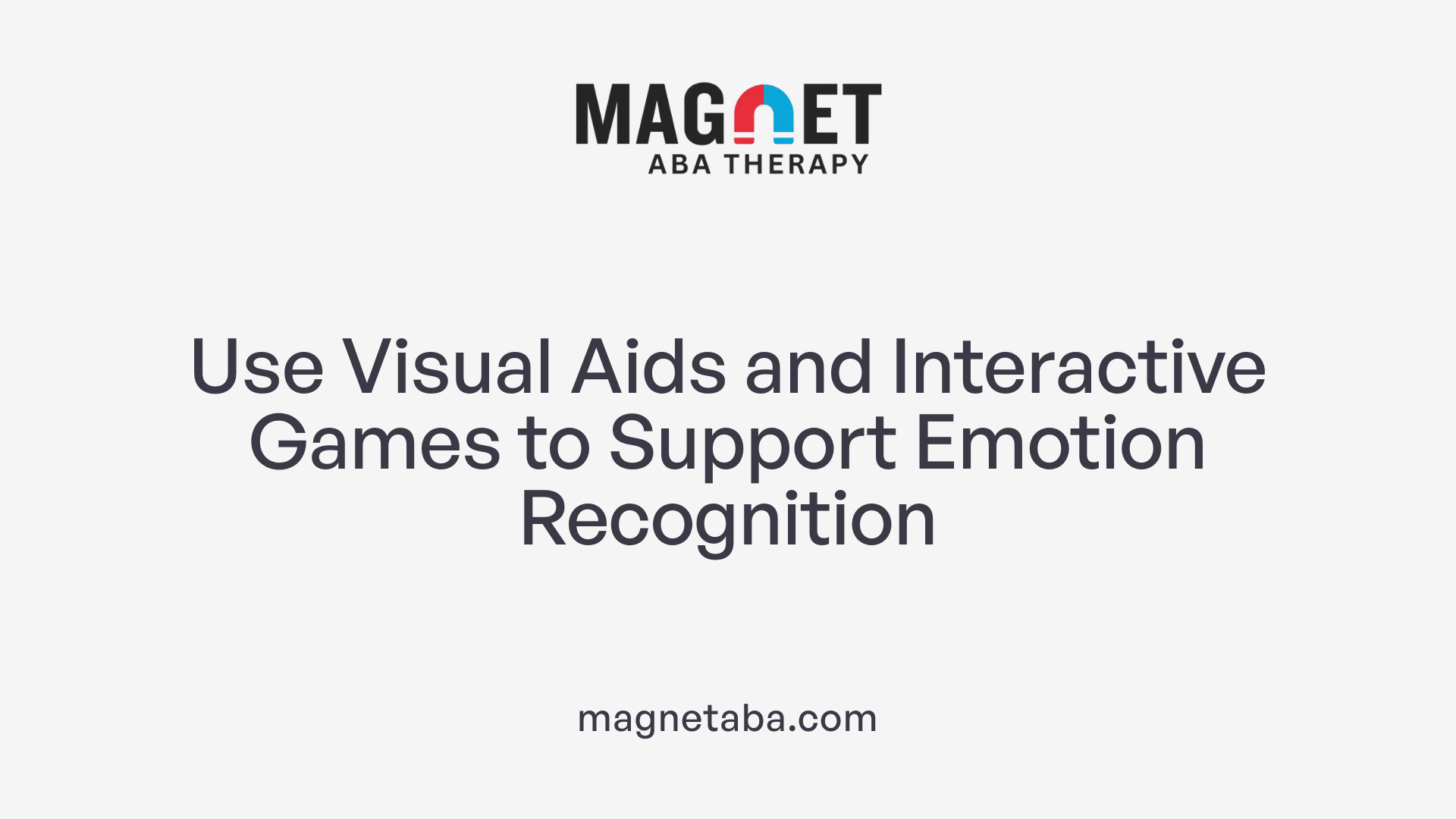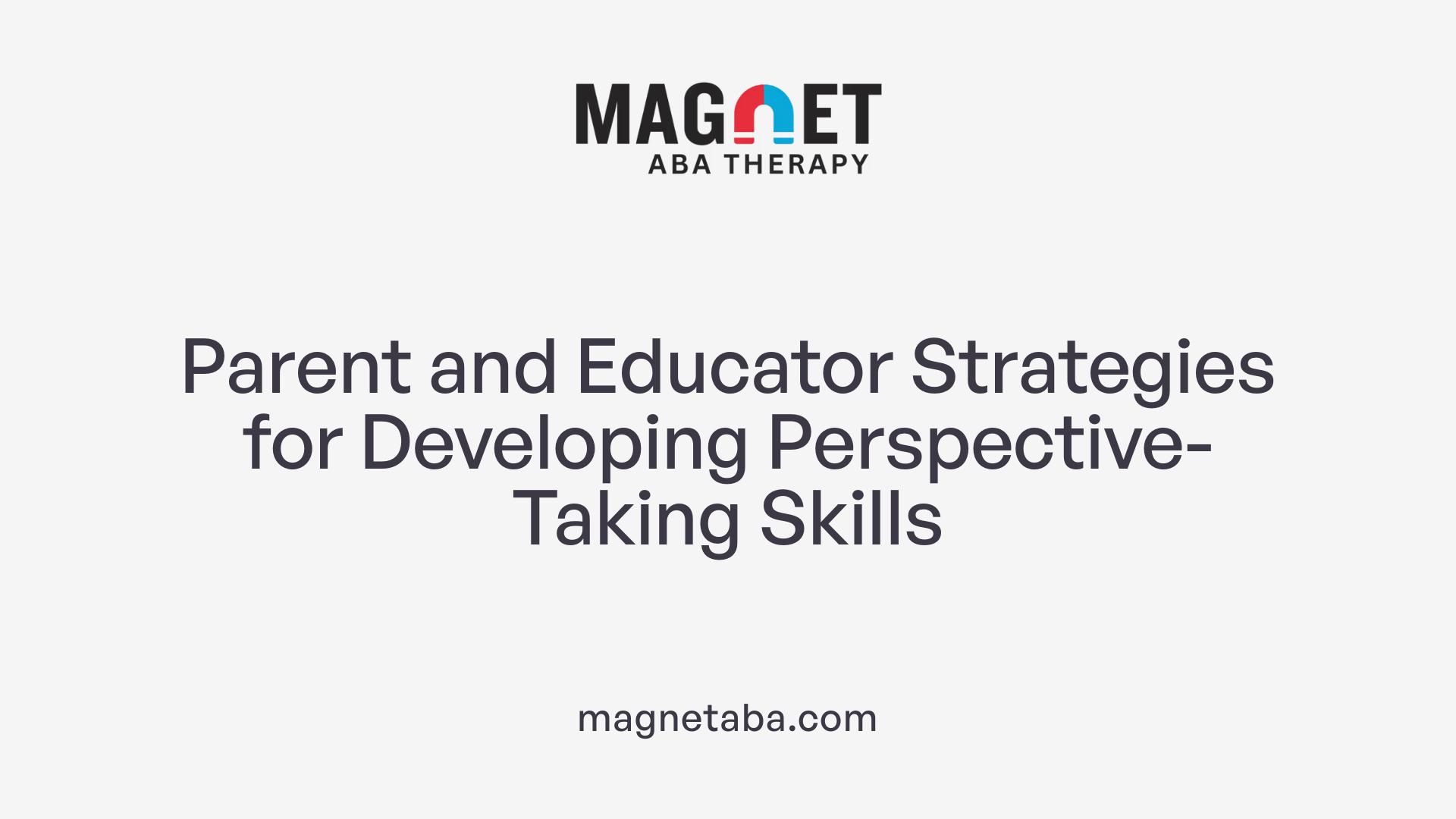Understanding the Foundations of Perspective-Taking in Autism
Perspective-taking is a vital component of social interaction, involving the ability to recognize and interpret the thoughts, feelings, and intentions of others. For children with autism spectrum disorder (ASD), developing these skills can be particularly challenging due to inherent differences in social cognition, such as deficits in Theory of Mind (ToM). To effectively support these children, educators and caregivers need strategies that are grounded in research, neurodiversity-affirming, and tailored to individual developmental levels.
Approaches in Teaching Perspective-Taking to Children with Autism

What does research say about effective approaches to teaching perspective-taking to children with autism?
Research highlights that the most successful strategies involve direct, structured teaching methods tailored to the unique needs of children with autism. Techniques like social stories, video modeling, role-playing, and explicit social skills training have demonstrated positive impacts on children’s understanding of others' emotions and intentions. While efforts to enhance false belief task performance alone have shown limited results in improving social behaviors broadly, interventions that incorporate modeling, immediate feedback, and using diverse examples tend to be more effective.
It is important to note that approaches focusing solely on theoretical understanding, such as false belief tasks or deictic relations, have uncertain effects on real-world social skills. Instead, effective intervention emphasizes observable, concrete behaviors. Assessing behavior within natural settings and involving stakeholders ensures that the teaching remains relevant and meaningful. Overall, behavioral, observable strategies grounded in everyday interactions are preferred over approaches based purely on abstract theory.
The Role of Naturalistic and Socially Meaningful Activities
 What are effective educational activities and tools to support social understanding in children with autism?
What are effective educational activities and tools to support social understanding in children with autism?
Engaging children with autism in activities that are both naturalistic and meaningful is essential for teaching perspective-taking skills. Reading literature with guided prompts helps children grasp characters’ emotions and motives, bridging the gap between story content and real-life social understanding. Visual aids like posters depicting facial expressions serve as quick references, making abstract feelings tangible and recognizable.
Interactive activities such as the 'Pass the Face' game are backed by research for their effectiveness in teaching emotional recognition. In this game, children imitate facial expressions and guess the emotions involved, fostering their ability to decode social cues.
Role-playing and storytelling are powerful tools for fostering understanding of diverse perspectives. They encourage children to imagine different viewpoints and internal states, creating opportunities for empathic responding. Group activities like classroom jobs or peer buddy systems promote social interaction, cooperation, and leadership skills, providing meaningful contexts for practicing perspective-taking.
Digital tools—such as apps like Avokiddo Emotions and Touch and Learn—add a multimedia dimension, engaging children with interactive scenarios and activities. Arts-based approaches—like creating emotion masks, paintings of scenes from others’ perspectives, or participating in community art projects—enhance social understanding through creative expression.
These activities not only teach perspective-taking but also connect social concepts to everyday life. By fostering curiosity, providing concrete visual cues, and creating social opportunities, educators and caregivers support children with autism in developing empathy, self-awareness, and social competence in a way that respects their neurodiversity.
What are the developmental challenges involved in teaching perspective-taking to children with autism?
Teaching perspective-taking to children with autism presents unique developmental hurdles. Many autistic children struggle with interpreting social cues, such as facial expressions, tone of voice, and body language. Recognizing another person’s emotions or beliefs can be difficult, especially when they differ from their own.
These challenges are often rooted in a tendency to focus narrowly on objects rather than social interactions, along with impaired eye contact and difficulties predicting others' reactions. Such difficulties hinder understanding that different people can hold different beliefs, desires, or intentions—a foundational aspect of Theory of Mind.
Complex social skills like conflict resolution, understanding subtle social nuances, and appreciating diverse viewpoints require explicit teaching. Visual supports, modeling, and social stories are often employed to make abstract social and emotional concepts more accessible. Tailored interventions that gradually increase in complexity are vital for helping children with autism acquire and generalize perspective-taking skills effectively.
Why are neurodiversity-affirming approaches important in teaching perspective-taking?
Incorporating neurodiversity-affirming methods is fundamental for respectful and effective teaching of perspective-taking to children with autism. These approaches recognize and celebrate the unique ways autistic individuals perceive and engage with the social world, rather than trying to enforce neurotypical standards.
By focusing on acceptance, these methods help children develop social skills authentically, fostering confidence and self-advocacy. Instead of forcing behaviors like forced eye contact or masking, educators support children in expressing their genuine selves and understanding others’ differences.
This perspective reduces stress associated with masking and minimizes anxiety, which is often linked to social conformity pressures. Emphasizing understanding and mutual respect promotes genuine social interactions rooted in appreciation of neurodiversity.
Ultimately, neurodiversity-affirming methods contribute to a more inclusive social environment where autistic children can thrive, develop meaningful relationships, and enjoy social interactions on their own terms. They foster resilience and mental well-being, supporting social skills that are sustainable and personally fulfilling.
Implications for Practice and Future Directions

How can educators and caregivers support children’s development of perspective-taking?
Supporting children’s perspective-taking requires a variety of resources and approaches tailored to their individual needs. Caregivers and educators can employ social stories, which describe specific social situations from multiple viewpoints, helping children understand various perspectives. Visual supports like posters of facial expressions or emotion charts offer concrete cues to recognize feelings.
Digital applications such as Avokiddo Emotions, Quandary, and Touch and Learn – Emotions provide interactive ways to practice emotional recognition and social reasoning. Role-playing activities and guided responses help children experience different perspectives actively.
In natural settings, inclusive group activities, peer-mediated interactions, and community outings reinforce social understanding authentically. Modeling social behaviors and providing positive reinforcement encourage children to try new skills.
Monitoring progress regularly allows adults to adjust strategies effectively, ensuring children do not get overwhelmed or discouraged. Creating a respectful, neurodiversity-affirming environment encourages genuine engagement and self-expression, fostering confidence and long-term social growth.
How does traditional social skills training compare to neurodiversity-affirming approaches?
Traditional social skills training often emphasizes rote behavior and masking, aiming to make children mimic socially acceptable responses. While this can result in superficial compliance, it may inadvertently pressure children to conform to neurotypical norms, occasionally leading to stress, discomfort, or decreased self-esteem.
In contrast, neurodiversity-affirming approaches prioritize respecting individual differences. These strategies focus on understanding others’ perspectives genuinely rather than enforcing conformity.
By supporting authentic communication and self-advocacy, these methods promote meaningful social integration. Children learn to express themselves freely and develop resilience, leading to better mental health and social competence in the long run.
What are the practical takeaways for early childhood education and intervention?
Recent research underscores the importance of explicit, experiential, and individualized teaching of perspective-taking. Early childhood programs should integrate visual supports, social stories, role-playing, and peer interactions that facilitate understanding of different social viewpoints.
Training educators in these techniques ensures consistent and effective implementation. Emphasizing neurodiversity and acceptance creates a safe space for children to explore social skills without fear of judgment.
Community-based and ecological approaches—such as outings and naturalistic interactions—help children generalize skills beyond the classroom.
Designing curricula that prioritize emotional understanding, acceptance, and authentic social interactions benefits all children, especially those with autism. These interventions foster prosocial behaviors, empathy, and self-confidence, supporting positive social development across childhood and into adolescence.
Promoting Authentic and Inclusive Social Growth
Developing perspective-taking skills in children with autism requires a comprehensive, respectful, and evidence-based approach. Employing direct teaching techniques, visual supports, and meaningful social activities supports meaningful social understanding and empathy. It is essential that interventions are neurodiversity-affirming, emphasizing acceptance over conformity, and tailored to each child's developmental level. By fostering genuine social skills rooted in respect and understanding, caregivers and educators can help autistic children navigate social worlds more confidently and authentically, paving the way for richer, more inclusive relationships.
References
- How Teaching Perspective Taking to Individuals with Autism ...
- Easy Ways to Teach Perspective Taking to an Autistic Child
- Theory of Mind and Perspective Taking - How to ABA
- Rethinking Perspective-Taking: Insights from an Autistic Psychologist
- Why Perspective-Taking and Neurodiversity Acceptance? (Part 2 of ...
- Building Perspective-taking Skills in Autistic Children with One Frog ...
- Using video modeling and reinforcement to teach perspective-taking ...
- Fun Activities and Tools for Building Perspective-Taking Skills in Kids












